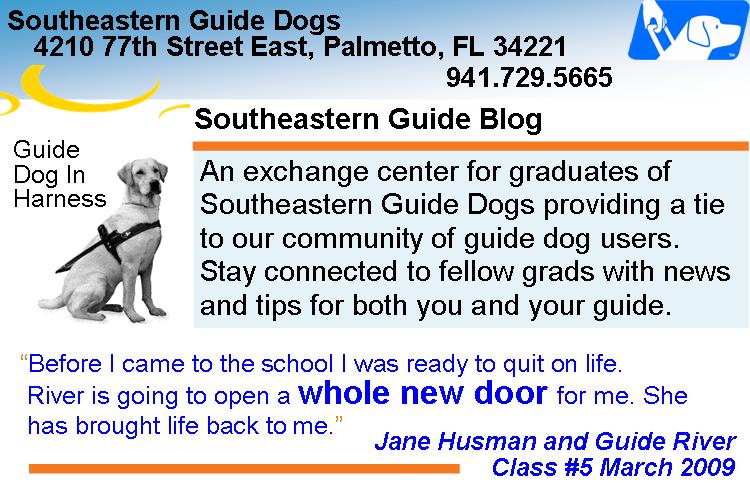Remember leaving Southeastern Guide Dogs with your guide who was fit, eager and ready to work? Now, time has passed and you may have noticed subtle changes in your dog. Maybe he is walking a little slower or she does not get up as quickly. This may be a common problem, but one of the most treatable and easily prevented medical conditions in a guide dog. Obesity.
Over the next several blogs weight control for your dog will be the topic. We'll cover how to monitor your dog's weight, nutrition and ways to head off those extra pounds. We also want to hear from you. Send in your questions or comments. What seems to work for you and your dog to keep your pooch from getting pudgy?Obesity: It's Not Just for Humans AnymoreAs our population grows in girth our nation's canines are expanding too. It is estimated that between 25 to 40% of all American pets are overweight. Like humans, being chunky can have detrimental effects on your dog's health, too. Just the short list of ailments include: diabetes, heart disease, respiratory problems, digestive disorders, and orthopedic injuries. Studies show that roughly 25% of overweight dogs develop serious joint complications. In addition to a decrease in the dog's quality of life, a shortened life expectancy is the result of your dog carrying extra weight.Once an energetic puppy, your dog needed calories for growth. A canine's long bones grow until they are up to 2 years of age and that growth needs to be fueled with extra calories. As he matures changes in metabolism require a shift in nutritional needs. After the 2 year point, any growth from extra calories is in girth.Some canine breeds pile on pounds more readily than others. Labradors and Golden Retrievers were bred for an active, working lifestyle. They tend to gain weight if fed the same amount when no longer as active.To avoid a less-than-fit Fido, gear the food you feed him to the correct stage of life. Over-the-counter pet foods have formulas specifically for adult and senior stages of a dog's life. Make sure you are using food in the right target range. The age range for these stages are:Extra pounds can creep onto a dog so slowly that you may not notice it at first. Pay extra attention when measuring those nuggets before pouring into the dish. The cup should be level - not heaping over the top. An overflowing serving can add as much as a half cup to your dog's meals every day. Even an additional 1% in calorie intake can put an unwanted 25% in extra weight on your dog by middle age.
Please continue to log on to our blog to learn more about canine weight control issues. Our next post will cover how to tell if your dog is overweight.
1 comment:
What has really worked well for me with Major is to make sure that he doesn't get many treats or people food at all because he is such a large dog and have kept him on the same amount of food that he was on at school. He has pretty much maintained his weight and that is a good thing because of his size and also knowing that he can gain weight quickly.
Lin and Major
Post a Comment